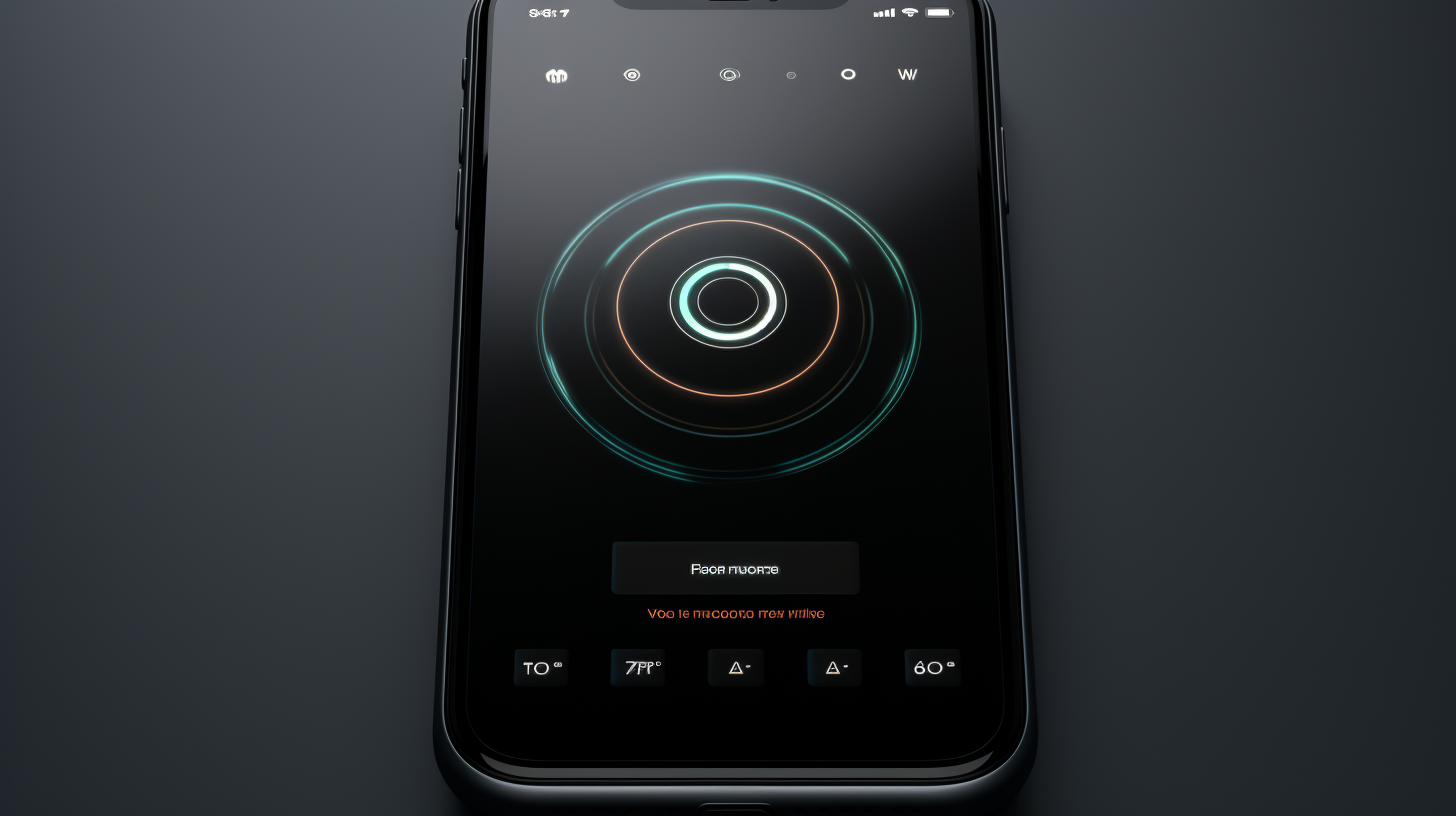Cracking the Code of GPT Prompt Engineering: Your Guide to Write Smarter
Welcome to the world of GPT Prompt Engineering! If you're looking to write smarter and get the most out of your GPT (Generative Pre-trained Transformer) models, you've come to the right place. In this guide, we'll delve into the fascinating field of GPT Prompt Engineering and explore how you can crack the code to create more effective prompts. GPT Prompt Engineering is the art of crafting prompts that elicit accurate and high-quality responses from AI models. By understanding the principles of GPT Prompt Engineering and employing various techniques, you can optimize the output of these powerful language models. In this article, we'll dive deep into the world of GPT Prompt Engineering and provide you with valuable insights and strategies to enhance your writing skills. We'll explore the importance of prompt engineering, key principles to keep in mind, and best practices that will set you on the path to success. So, whether you're a content creator, a developer, or simply someone interested in harnessing the power of AI language models, get ready to unlock the secrets of GPT Prompt Engineering and take your writing to the next level. Let's dive in and unravel the mysteries together!
Understanding GPT Prompt Engineering
When it comes to utilizing GPT-3 (Generative Pre-trained Transformer 3) to its full potential, prompt engineering plays a crucial role. In this section, we will explore the concept of GPT prompt engineering, its importance, and the key principles to keep in mind.
What is GPT Prompt Engineering?
GPT prompt engineering refers to the process of crafting effective instructions or prompts that yield desired outcomes from GPT models. It involves structuring and formatting prompts in a way that allows the model to generate accurate and relevant responses. By providing clear instructions, specific examples, and other techniques, prompt engineering helps guide the model's behavior and output.
Why is GPT Prompt Engineering important?
Effective prompt engineering is vital for several reasons:
- Enhancing model performance: Well-crafted prompts can lead to improved model performance, generating more accurate and relevant responses.
- Controlling output: By providing specific instructions and examples, prompt engineering can shape the model's output to meet desired objectives.
- Maximizing efficiency: Well-structured prompts can help speed up the training process, as the model has a clear understanding of what is expected.
Key principles of GPT Prompt Engineering
To achieve optimal results with GPT prompt engineering, it's essential to keep the following key principles in mind:
- Clarity and simplicity: Craft clear, concise, and unambiguous instructions. Avoid complex language or jargon that might confuse the model.
- Specificity: Use specific examples and provide detailed information to guide the model's responses accurately.
- Contextualization: Provide relevant context and background information to help the model understand the desired output.
- Neutrality: Ensure prompts are neutral and unbiased, as biased prompts can lead to biased outputs.
- Open-endedness: Allow room for creativity and alternative solutions by designing prompts that encourage the model to think broadly.
By adhering to these principles, you can set the foundation for effective GPT prompt engineering. In the next section, we will explore how to set up effective prompts by using techniques such as clear instructions, specific examples, and avoiding ambiguity. So, let's dive in!
Setting Up Effective GPT Prompts
When it comes to GPT prompt engineering, one of the most important factors in getting the desired output is setting up effective prompts. Writing clear and concise instructions can make a significant difference in the quality and relevance of the AI-generated content. In this section, we'll explore some techniques to help you craft effective GPT prompts that yield the results you're looking for.
Crafting clear and concise instructions
- Keep your prompts simple and straightforward. Avoid using overly complex or convoluted language that could confuse the model.
- Clearly define the task or question you want the AI to address. Be specific about what kind of information or output you're seeking.
- Use action verbs to direct the AI's response. For example, instead of asking, "Can you describe a beach vacation?", provide clear instructions like, "Describe your most memorable beach vacation."
Using specific examples and details
- To guide the AI's response, provide specific examples or details related to the topic. This helps the model understand the context and deliver more accurate results.
- Include relevant keywords or phrases that are directly related to the desired output. This can help the AI generate content that aligns with your objectives.
- Avoid vague or general prompts that could lead to ambiguous or off-topic responses. The more specific you are, the better the AI can understand and fulfill your request.
Avoiding ambiguous or misleading prompts
- Be mindful of potential misinterpretations. Avoid prompts that could have multiple meanings or be misunderstood by the model. This can lead to inaccurate or irrelevant responses.
- Double-check your prompts for any potential biases or assumptions. Ensure that you're asking for information in a fair and unbiased manner.
- If you're uncertain about a prompt, try rephrasing or providing additional context to remove any ambiguity. This can help the model generate more accurate responses.
Remember, the effectiveness of GPT prompts greatly impacts the output you receive. By crafting clear, specific, and unambiguous instructions, you can guide the AI towards providing the information or content you're seeking. Experiment with different prompt formulations to find the most effective approach for your specific needs.
"Clear and concise prompts are like the guiding light for AI models. They help the model understand your expectations and deliver the output you desire."
Utilizing Techniques for Enhanced Output
When it comes to GPT Prompt Engineering, there are various techniques you can utilize to enhance the output of the language model. These techniques will help you generate more accurate and relevant responses from GPT. Let's dive in!
Providing context and background information
One effective technique is to provide context and background information in your prompts. This helps GPT understand the specific context of your query and generate more meaningful responses. By giving GPT the necessary context, you can guide it to produce responses that align with your desired outcomes.
For example, instead of asking "What is the capital of France?", you can provide more context by asking "Can you please provide me with some information about the capital city of France, including its history and prominent landmarks?" GPT will then have a better understanding of the information you're looking for, leading to more accurate and detailed responses.
Asking for multiple perspectives or alternative solutions
Another technique to enhance GPT's output is to ask for multiple perspectives or alternative solutions. By asking GPT to consider different viewpoints or approaches, you can receive a wider range of responses that may offer valuable insights or creative ideas.
For instance, instead of asking "What are the advantages of using solar energy?", you can prompt GPT by saying "Can you provide me with different perspectives on the advantages and disadvantages of using solar energy for both residential and commercial applications?" This prompts GPT to consider both sides of the argument, resulting in a more comprehensive and balanced response.
Experimenting with temperature and sampling techniques
Temperature and sampling techniques can significantly impact the output generated by GPT. The temperature parameter controls the level of randomness in the generated text. Higher values (e.g., 0.8) result in more random and creative responses, while lower values (e.g., 0.2) produce more focused and conservative outputs.
Sampling techniques, such as top-k and top-p sampling, allow you to further control the diversity of the generated text. Top-k sampling limits the output to the top-k most likely tokens, while top-p sampling (also known as nucleus sampling) restricts the output to a cumulative probability threshold.
Experimenting with different temperature and sampling settings can help you fine-tune the output of GPT to better suit your needs and preferences. It's recommended to try out different combinations and see which ones yield the most satisfactory results.
"By providing context, asking for multiple perspectives, and experimenting with temperature and sampling techniques, you can greatly enhance the output of GPT. These techniques allow you to refine the generated text to align with your desired outcomes and generate more accurate and relevant responses."
Structuring and Formatting Prompts
When it comes to GPT prompt engineering, the way you structure and format your prompts can have a significant impact on the quality of the output you receive. By breaking down complex queries into simpler parts and using formatting techniques to enhance clarity, you can ensure that GPT generates accurate and relevant responses. In this section, we will explore some best practices for structuring and formatting prompts to get the most out of GPT.
Breaking down complex queries into simpler parts
One effective strategy for structuring prompts is to break down complex queries into simpler parts. Instead of overwhelming GPT with a long and convoluted prompt, try to divide it into smaller, more manageable pieces. This approach helps GPT understand the prompt better and generates more focused and accurate responses.
For example, instead of asking a single question like "What are the causes, symptoms, and treatment options for a particular medical condition?", consider breaking it down into three separate questions:
- "What are the causes of [medical condition]?"
- "What are the symptoms of [medical condition]?"
- "What are the treatment options for [medical condition]?"
By breaking down the prompt into discreet parts, GPT can provide specific and detailed information for each component, enhancing the overall quality of the response.
Using bullet points or numbered lists
Another effective way to structure prompts is by using bullet points or numbered lists. This formatting technique helps organize information and makes it easier for GPT to understand and respond in a structured manner. It also improves the readability of prompts and makes the output more user-friendly.
For example, instead of presenting a prompt as a paragraph:
"Please provide details about the features, pricing, and availability of the product."
Consider using bullet points or a numbered list:
- Features of the product
- Pricing options
- Availability details
Using this format not only improves the clarity of the prompt but also enables GPT to generate responses that align with the specific information requested.
Utilizing paragraph separation for clarity
In addition to using bullet points or numbered lists, it's essential to utilize paragraph separation for clarity. Breaking the prompt into distinct paragraphs helps differentiate different aspects or requirements of the prompt. This technique ensures that GPT can understand and address each part separately, resulting in more accurate and coherent responses.
For instance, if you have a prompt that requires GPT to analyze and compare two different topics, you can structure it like this:
Prompt:
Compare and contrast the advantages and disadvantages of renewable energy sources versus fossil fuels. Provide examples and supporting evidence for each category.
By separating the prompt into paragraphs, you can clearly indicate the different components or tasks GPT needs to focus on. This structure helps GPT generate more organized and comprehensive responses.
To summarize, structuring and formatting prompts in a clear and concise manner is crucial for optimizing the output of GPT. By breaking down complex queries, using bullet points or numbered lists, and utilizing paragraph separation, you can enhance the accuracy and relevance of the responses generated. Remember, clear prompts lead to smarter responses!
Avoiding Bias and Controversial Content
In the world of GPT prompt engineering, it is important to be mindful of avoiding bias and controversial content. As AI language models gain more prominence and influence, it becomes crucial to ensure that the generated output is neutral, fair, and does not promote any form of discrimination or harm. Here are some key points to consider when it comes to avoiding bias and controversial content in your prompts:
Ensuring neutrality and fairness
- Be mindful of your language: Use neutral and inclusive language throughout your prompts. Avoid using language that may favor one gender, race, religion, or any other characteristic.
- Avoid stereotyping: Refrain from making broad generalizations or assumptions about individuals or groups of people. Treat every prompt with fairness and respect.
- Consider diverse perspectives: When crafting prompts, take into account the perspectives of various cultures, backgrounds, and identities. Strive to be inclusive and considerate of different viewpoints.
Being mindful of cultural sensitivities
- Research cultural norms: To avoid unintentional offense, familiarize yourself with cultural norms and sensitivities. Be aware of sensitive topics or taboos that vary across different cultures.
- Respect cultural differences: Show respect for cultural differences and ensure that your prompts do not stereotype or discriminate against any specific culture or community.
- Seek diverse input: If you are unsure about the sensitivity of a certain topic, consult individuals from different cultural backgrounds to gain a broader understanding and ensure your prompts are culturally sensitive.
Handling sensitive or divisive topics with care
- Approach with caution: If you need to address sensitive or divisive topics, be cautious about how you frame the prompt. Take into consideration the emotional impact it may have on individuals who interact with the AI model.
- Provide guidance: Include clear instructions in your prompts to guide the AI model towards providing unbiased and informative responses. Encourage the generation of empathetic and respectful content.
- Monitor and review: Continuously monitor and review the output generated by the AI model to identify and address any biases or controversial content. This will help you ensure ongoing improvement and fairness.
By following these guidelines, you can actively work towards avoiding bias and controversial content in your GPT prompts. Remember, the goal is to create an AI language model that promotes fairness, inclusivity, and respects the diverse perspectives of its users.
Iterating and Experimenting with Prompts
One of the key aspects of GPT prompt engineering is the ability to iterate and experiment with prompts. By continuously testing different variations and formulations, you can refine and improve the output generated by the model. Here are some strategies to help you in this process:
Testing different variations and formulations
- Try out different wording: Experiment with different ways to phrase your prompts. Sometimes a small change in wording can lead to significant improvements in the output.
- Test prompt length: Vary the length of your prompts and observe how it affects the generated responses. Sometimes shorter prompts may yield more focused and concise answers, while longer prompts may encourage more detailed and elaborate responses.
- Explore different question formats: Instead of using traditional question formats, you can also try using statements or incomplete sentences as prompts. This can encourage the model to generate more creative and diverse responses.
- Experiment with different prompt types: Explore different types of prompts such as yes/no questions, multiple-choice questions, or open-ended prompts to see how the model responds. This can help you achieve specific goals or gather different types of information.
Collecting feedback and adapting prompts accordingly
- Seek feedback from users: Engage with users or stakeholders who interact with the model's output. Their insights and perspectives can be invaluable in identifying areas for improvement and shaping future prompts.
- Analyze generated outputs: Carefully review the output generated by the model in response to different prompts. Look for patterns, biases, or inconsistencies that can be addressed through prompt iteration.
- Monitor performance metrics: Track metrics such as relevance, coherence, and clarity of the generated responses. Compare the performance of different prompts to identify the most effective ones.
Iterative improvement for optimal results
- Learn from previous iterations: Document your prompt iterations and the corresponding outputs. Analyze the impact of each iteration and use this knowledge to make informed decisions for future prompt engineering.
- Refine and fine-tune prompts: Based on the feedback and insights gained from previous iterations, refine your prompts to achieve more precise and desired outcomes. Continuously adapt and improve the prompts to meet specific goals and user requirements.
- Embrace an iterative mindset: GPT prompt engineering is an ongoing process. Keep experimenting, learning, and refining your prompts to optimize the performance and effectiveness of the model.
Remember, the key to successful prompt engineering is to be open to experimentation and adaptation. Through continuous iteration, you can unlock the full potential of GPT models and produce high-quality and relevant outputs.
"The key to good prompt engineering is testing and iterating. Keep experimenting with different prompts and learn from the results."
Best Practices for GPT Prompt Engineering
GPT Prompt Engineering is a crucial aspect of generating quality outputs from GPT models. By carefully crafting prompts, you can guide the model to produce more accurate and relevant responses. Here are some best practices to help you get the most out of your prompt engineering efforts:
Keeping prompts concise and to the point
- Long and wordy prompts can confuse the model and lead to less accurate outputs.
- Keep your prompts clear and concise by focusing on the key information you want the model to consider.
- Avoid unnecessary fluff or excessive background information that may distract the model.
Balancing specificity and flexibility
- Strike a balance between providing specific instructions and allowing the model room for creative interpretation.
- Specify the desired format or structure when necessary, but also allow flexibility for the model to generate diverse responses.
- Find the sweet spot where your prompts are specific enough to guide the model, but not overly restrictive.
Creating prompts that align with intended outcomes
- Always consider the desired outcome or purpose of the generated content.
- Design prompts that steer the model towards producing outputs that align with your goals.
- Tailor your prompts to match the tone, style, and context of the content you expect from the model.
Remember, GPT Prompt Engineering is an iterative process and requires experimentation and refinement. Here are key tips to keep in mind as you navigate this journey:
- Test different variations and formulations: Try out different prompt structures, wording, and instructions to see which ones yield the best results.
- Collect feedback and adapt prompts accordingly: Gather feedback from users or reviewers to uncover areas for improvement in your prompts.
- Iterate for optimal results: Continuously refine and iterate on your prompts based on feedback and analysis of the generated outputs.
Ultimately, effective GPT Prompt Engineering will significantly enhance the quality and relevance of the responses you receive from the GPT model. By following these best practices, you can unlock the true potential of this powerful AI tool.
Stay tuned to the next section, where we delve into the importance of structuring and formatting prompts.
Conclusion
In conclusion, GPT Prompt Engineering is a powerful tool that can help you unlock the full potential of GPT models and write smarter, more effective prompts. By understanding the principles of GPT Prompt Engineering, setting up effective prompts, utilizing techniques for enhanced output, structuring and formatting prompts, avoiding bias and controversial content, and iterating and experimenting with prompts, you can optimize your use of GPT models and achieve better results.
Remember that GPT Prompt Engineering is an ongoing process of refinement and experimentation. It may take time and effort to discover the prompts that work best for your specific needs, but the results are worth it. By following the best practices outlined in this guide and continuously iterating and improving your prompts, you can maximize the value and impact of GPT models in your applications.
Keep in mind that GPT models are not perfect and can sometimes produce biased or inaccurate outputs. It is essential to critically evaluate and validate the generated content and ensure that it aligns with your intended outcomes. Regularly collecting feedback from users and adapting your prompts accordingly can help you address any issues and improve the overall quality of the generated content.
With the right approach and a thorough understanding of GPT Prompt Engineering, you can harness the potential of GPT models to generate high-quality, engaging, and personalized content. So, go ahead and crack the code of GPT Prompt Engineering, and unlock a world of possibilities in your writing and content generation endeavors. Happy writing!
Share this
You May Also Like
These Related Stories

Embracing AI: Revolutionizing Your Content with GPT Prompts

Revolutionary AI-Powered Writing: Unlocking the Power of Chat GPT Prompts




